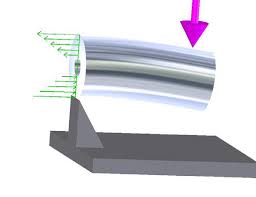DIFFERENT TYPES OF CYCLIC LOADINGS
Cyclic loading is a type of loading that involves repetitive loading and unloading of a material or structure. This type of loading is common in many engineering applications, such as in the design of bridges, aircraft, and automotive components. There are different types of cyclic loadings, and in this article, we will discuss some of the most common ones.
- Fatigue Loading Fatigue loading occurs when a material is subjected to repetitive loading and unloading cycles, which can lead to failure over time. This type of loading is common in many engineering applications, such as in the design of aircraft components, where the stresses can be high and the loading cycles can be many. Fatigue loading can lead to crack formation and propagation, which can ultimately lead to catastrophic failure.
- Thermal Loading Thermal loading occurs when a material is subjected to cyclic heating and cooling cycles. This type of loading is common in many engineering applications, such as in the design of power plant components, where the materials are subjected to high temperatures and rapid cooling cycles. Thermal loading can cause stresses in the material due to thermal expansion and contraction, which can lead to fatigue failure over time.
- Vibrational Loading Vibrational loading occurs when a material is subjected to repetitive vibrations or oscillations. This type of loading is common in many engineering applications, such as in the design of machinery and vehicles. Vibrational loading can cause stresses in the material due to the cyclic nature of the vibrations, which can lead to fatigue failure over time.
- Impact Loading Impact loading occurs when a material is subjected to sudden, high-intensity loads. This type of loading is common in many engineering applications, such as in the design of vehicle components and structures that must withstand sudden impacts, such as in earthquake-resistant building design. Impact loading can cause stresses in the material that can lead to deformation or failure.
- Corrosive Loading Corrosive loading occurs when a material is subjected to repetitive exposure to corrosive environments, such as saltwater or acidic environments. This type of loading is common in many engineering applications, such as in the design of offshore structures and pipelines. Corrosive loading can cause the material to weaken over time, leading to fatigue failure or other types of failure.
In conclusion, cyclic loading can lead to different types of failure in materials and structures, depending on the nature of the loading. It is essential for engineers to consider the type of cyclic loading that a material or structure may be subjected to and design accordingly to ensure that the material or structure can withstand the loading conditions over its intended lifespan.


